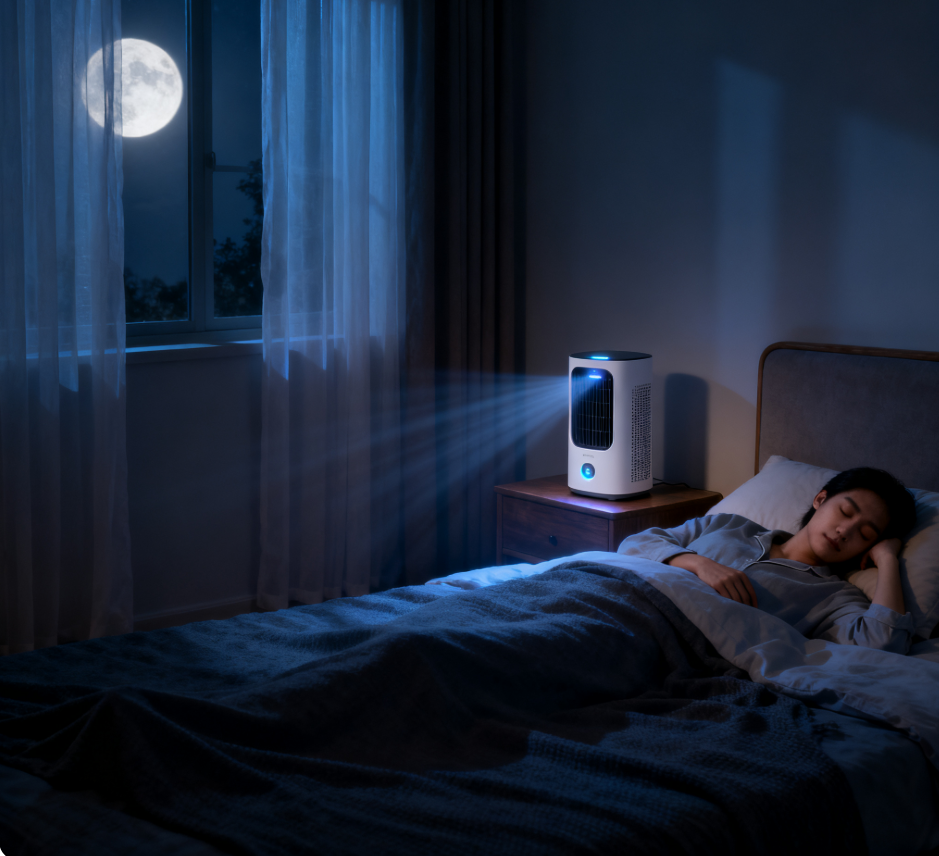Indoor air quality has become a global health priority. According to the World Health Organization, exposure to poor air quality contributes to millions of premature deaths every year. In urban environments, fine particulate matter (PM2.5), volatile organic compounds (VOCs), and elevated CO₂ levels are the most common pollutants. While traditional air purifiers focus on filtration, the next generation of smart purifiers is shifting toward real-time sensing and adaptive control. One of the key enablers of this evolution is millimeter-wave (mmWave) radar.
Linpowave’s mmWave radar solutions bring unique advantages to the air purification industry, making air purifiers not only cleaner but also smarter.
Why Traditional Air Purifiers Fall Short
Most conventional purifiers rely on timed fan cycles or basic air quality sensors. However, these methods often fail in real-world scenarios:
-
Over-purification → running at high speed even when no one is present, wasting energy.
-
Under-purification → failing to respond quickly when multiple people enter the room and CO₂ rises sharply.
-
Sensor drift → low-cost sensors for VOCs or dust particles can lose accuracy over time.
This gap creates a need for presence-aware and adaptive purification systems.
The Role of mmWave Radar in Smart Purification
Unlike infrared motion sensors or simple timers, mmWave radar can accurately detect human presence, movement, and even breathing patterns. This enables purifiers to adjust airflow in real time based on actual occupancy and activity levels.
Key advantages include:
-
Non-intrusive presence detection
mmWave radar does not rely on cameras or microphones, ensuring privacy protection in bedrooms, offices, or public spaces. -
High sensitivity
It can detect subtle motions such as breathing or micro-movements, ensuring the purifier knows when people are still in the room even if they are sitting quietly. -
All-weather operation
Unlike optical sensors, mmWave radar is unaffected by lighting conditions, smoke, or dust, maintaining reliable performance in diverse indoor environments. -
Real-time occupancy mapping
Advanced radar modules can estimate number of occupants and distance from the purifier, allowing more targeted airflow control.
Data-Driven Benefits of Radar-Enhanced Purifiers
-
Energy Savings
Studies by the U.S. Environmental Protection Agency show that air purifiers can consume 50–200 watts when operating at high fan speeds. By using mmWave radar to optimize fan cycles, energy consumption can be reduced by up to 30% without compromising air quality. -
Healthier CO₂ Levels
In office spaces, CO₂ can easily exceed 1500 ppm when multiple people are present, leading to fatigue and reduced productivity. A radar-enabled purifier can detect rising occupancy and automatically boost airflow, keeping CO₂ closer to the recommended <1000 ppm threshold. -
Smarter Filter Utilization
Filters clog faster if purifiers run continuously. Adaptive control based on mmWave presence detection can extend filter lifespan by 20–40%, reducing maintenance costs.
Integration with Smart Home & IoT
Linpowave’s mmWave radar modules are designed for seamless integration with IoT platforms such as Home Assistant, Matter, or proprietary smart ecosystems. When combined with air quality sensors (for CO₂, PM2.5, VOCs), users gain:
-
Context-aware purification → airflow increases only when pollutants and people are both detected.
-
Personalized comfort → purification adapts to room usage, whether it’s a quiet night of sleep or an office meeting.
-
Scalable deployment → one radar-enabled purifier can act as a sensor hub, feeding occupancy data into larger building management systems.
For more details on Linpowave’s sensing solutions, see our mmWave Radar Technology Overview.
Industry Outlook: Toward Truly Adaptive Environments
The smart appliance market is expected to grow to over $150 billion by 2030 (Statista), with air purification as a key segment. The integration of radar-based presence sensing represents a major shift—from static devices to adaptive environmental systems that respond intelligently to people and conditions.
Future opportunities include:
-
Healthcare applications → detecting abnormal breathing during sleep and adjusting airflow automatically.
-
Shared workspaces → optimizing air circulation based on real-time occupancy to improve productivity.
-
Public facilities → scaling radar-enabled purifiers in schools, gyms, and libraries for healthier environments.
Conclusion
Traditional air purifiers have been effective in filtering pollutants, but they lack adaptability. By integrating Linpowave’s mmWave radar technology, smart air purifiers can achieve:
-
Cleaner air, aligned with WHO and EPA health guidelines.
-
Smarter energy use through adaptive fan control.
-
Longer filter life and reduced maintenance.
-
Enhanced user comfort and safety with non-intrusive presence detection.
This marks a significant step toward next-generation indoor air quality solutions that are both sustainable and people-centered.
FAQ: mmWave Radar in Smart Air Purifiers
Q1: What is the main difference between mmWave radar and traditional motion sensors in air purifiers?
Traditional motion sensors (like PIR infrared) detect only large movements and often fail if a person is sitting still. mmWave radar, by contrast, can detect micro-movements such as breathing, ensuring the purifier adjusts airflow accurately even when occupants are stationary.
Q2: Does mmWave radar compromise privacy when used in indoor environments?
No. Unlike cameras or microphones, mmWave radar works by emitting radio waves and measuring reflections. It does not capture images or audio, making it a privacy-friendly solution for bedrooms, offices, and public spaces.
Q3: How does mmWave radar improve energy efficiency in air purifiers?
By detecting occupancy in real time, the purifier only boosts airflow when people are present and pollutant levels are high. This can reduce energy consumption by up to 30%, according to comparative studies on smart appliance energy savings.
Q4: Can mmWave radar be combined with other air quality sensors?
Yes. It is often integrated with sensors for CO₂, VOCs, temperature, humidity, and particulate matter. Together, they create a comprehensive indoor air quality system, enabling both comfort and safety.
Q5: What are the potential applications beyond homes?
mmWave-enabled purifiers are increasingly relevant in schools, hospitals, co-working spaces, and public facilities, where maintaining optimal air quality based on occupancy can improve health outcomes and productivity.



